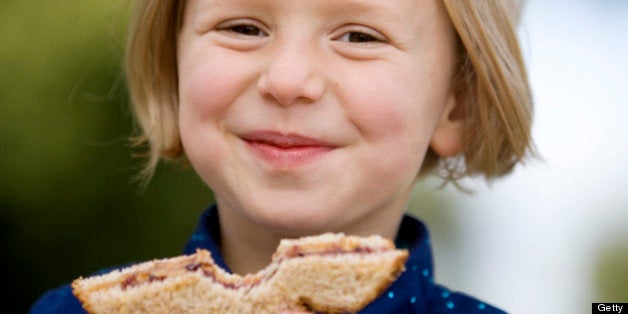
Last month, I wrote about how my daughter's summer camp was serving Oreos, cheese doodles and potato chips for a snack, and that for my daughter to get a "healthy snack" from home, she had to go to the nurse's office.
Well, that story seemed to strike a nerve: Thousands of people shared the article and the comments, both supportive and not, continue to fill the page. The story of this one mother in one day camp made international news.
And the good news is that the camp heard you -- and realized that I am not the only one in the world who thinks that our kids need something more than empty, processed food to get through the day. Here's the new menu:
Carrot sticks
Pita Chips
Pretzels
No sugar added popsicles and ice pops
Graham Crackers
Raisins
Apple slices
Apple sauce
Grapes
Watermelon
Bananas
Challah
Cheerios
As you can see, the highly processed, nutritionally void "food" is being replaced with more fruit and vegetables, including carrot sticks, apple slices, grapes, bananas and watermelon. Instead of cookies and chips, children will have applesauce, no sugar-added ice pops, raisins, pretzels and pita chips.
This is a tremendous step forward for a camp that for years served "junk" food with little resistance -- and faces its own challenges to what they can serve, including minimal storage space, no access to an industrial kitchen and dietary restraints (all food needs to be kosher, nut-free and dairy-free). But what the camp realized is that if you make healthy eating a priority, you can do it.
Indeed, every preschool director I've talked to through our First Bites program -- which aims to help preschools both offer healthier food as well encourage young children to eat that food -- has expressed similar barriers to offering whole, real food instead of highly processed, shelf stable foods. So what leads these schools and camps to change?
First, parents need to ask what their children are being served and speak up if they want a change. Once I saw the camp menu, I contacted the director about making changes and told every parent I knew or met in the hallway to contact the director if they also wanted a change. Create a parent committee, start a petition or identify community experts who can provide counsel free-of-charge, like a Registered Dietitian. Also, while it makes sense to start talking to your child's teacher and the head of the program, don't overlook the impact of the person who actually buys the snack, oftentimes neither the teacher nor the head of school. The person who does the shopping ultimately controls the menu.
Second, people seldom fall on their sword to serve cheese curls. There are always other barriers to making a change such as limited storage space, lack of time to cut food, budget constraints or teachers who find cookies and chips effective rewards in the classroom. Accept that these are barriers -- and work with the school to creatively find solutions. Throwing a bunch of nutrition information at someone seldom results in actual change so you need to go beyond the obvious. Perhaps you can find someone in the community to donate a used refrigerator or ask parents to take turns bringing in fresh fruit. Provide suggestions for non-food rewards, like stickers, more recess time or a private lunch with the head of school. Also, offer to help make the changes by researching other snack options with the school's supplier or call nearby farms and inquire about delivering produce to your school.
Finally, meet a school where they are and show them a way forward. When I work with our First Bites preschools, I start by asking them what snacks they are already serving and then suggest healthier options. For example, if they are serving frozen waffles, suggest a whole grain equivalent, or encourage them to serve popcorn instead of Doritos. Set realistic expectations: a program is not going to go from Oreos to homemade, organic kale chips overnight (my daughter's camp, for example, still serves Italian Ices with artificial coloring and loads of sugar), so don't let perfection be the enemy of the good. Once a school has made a small change, they may be more open to making others. For at the end of the day, it's not just our children who need to learn to eat healthier, it's our teachers, counselors, and principals too.
Visit First Bites and join the First Bites community on Facebook and Twitter for more information about kids' health habits and nutrition.